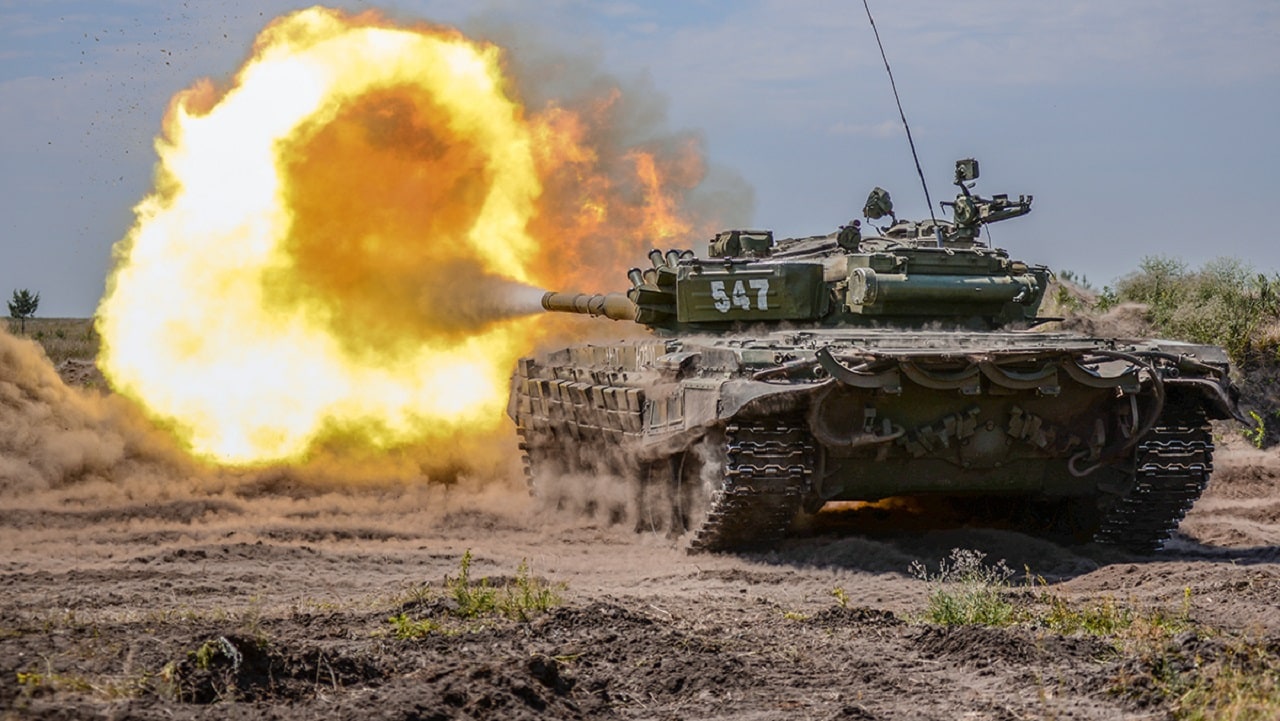Russian Tank Losses Mounting in Ukraine – Ukraine has become the graveyard of Russian tanks, and according to a senior U.S. defense official, it is believed that almost 1,000 main battle tanks (MBTs) have been destroyed or otherwise rendered inoperable. Additional Russian losses in Ukraine reportedly include at least 50 helicopters, three dozen fighter-bomber aircraft, and at least 350 artillery pieces. Russia has also lost more personnel in the three months of the war than the Soviet Union lost during the 10-year-long conflict in Afghanistan.
Those numbers are more conservative than figures from the Ukrainian General Staff, which claimed that its forces had destroyed 187 aircraft, 155 helicopters, 71 air defense systems, 1,688 vehicles, eight ships, a light speedboat, 76 fuel vehicles, and 215 unmanned aerial vehicles – along with 970 Russian tanks, 2,389 armored personnel vehicles, 431 artillery systems, and 151 multiple launch rocket systems.
The fact remains that a lot of Russian tanks have been destroyed in the three-month-long war, and the Kremlin is far from seeing victory. The problem has gotten so great in fact that the days of the tank could be coming to an end.
Phillips Payson O’Brien, a professor of strategic studies at the University of St. Andrews in Scotland and author of How the War Was Won: Air-Sea Power and Allied Victory in World War II, has gone so far as to suggest that Russia’s invasion of Ukraine should be seen as the last “20th-century war,” and that the tank will no longer continue to play a dominant role on the battlefield.
“This transition is most evident with the tank, the king of the land battlefield since World War II,” O’Brien wrote in a feature this month for The Atlantic.
He argued that at the time of its invasion in February, Russia held not just a significant numerical advantage over Ukraine in terms of the number of tanks in its arsenal, but a qualitative edge as well. Russia’s tanks were judged to be among the very best in the world.
Yet, instead of rolling over Ukrainian positions, the tanks proved to be easy targets, and now the destroyed hulks of Russian MBTs – many with their turrets blown off thanks to the well-known “jack-in-the-box” flaw – litter fields around the country.
“The tank’s vulnerabilities—it is ill-suited to many types of terrain, inflexible in its movements, and the opposite of stealthy—have been known for years, but until this war, they had not been exposed so clearly,” O’Brien added.
Russia’s losses have become a propaganda coup for Kyiv, and now visitors to the Ukrainian capital will be greeted by Russian tanks. Yet instead of rolling in as part of a victory parade or even successfully capturing the city in battle, the tanks are war trophies put on display to mock the Russian efforts, not to mention President Vladimir Putin’s ambitions.
The losses of tanks are so great that Moscow is literally scraping the bottom of the barrel, as 60-year-old T-62s are now being deployed to bolster the numbers, Forbes.com reported. The Kremlin has maintained stockpiles of thousands of the older armored vehicles, and whilst many were considered barely usable, Russia is working around the clock to get as many as possible into working order.
It is hard to imagine how those obsolete machines will do when more modern tanks, such as the T-90M, are failing to turn the tide of battle. At this rate, Russia may need to call up its few dozen T-34s, the iconic World War II tank that helped drive the Nazis out of Ukraine 80 years ago. Russia acquired those surplus T-34s from Laos in 2019, and the plan was to use them in films, and museum displays, but soon it wouldn’t be surprising to see them rolling across Ukraine again.
Moscow almost seems that desperate.
Now a Senior Editor for 1945, Peter Suciu is a Michigan-based writer who has contributed to more than four dozen magazines, newspapers and websites. He regularly writes about military hardware, and is the author of several books on military headgear including A Gallery of Military Headdress, which is available on Amazon.com. Peter is also a Contributing Writer for Forbes.

